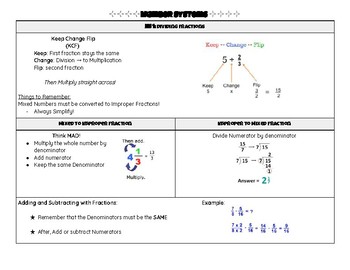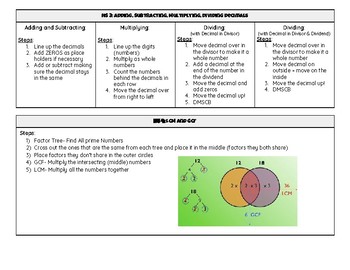6th Grade Math Study Guide
Middle Math R Us
75 Followers
Grade Levels
5th - 8th
Subjects
Resource Type
Standards
CCSS6.G.A.1
CCSS6.G.A.2
CCSS6.G.A.3
CCSS6.G.A.4
CCSS6.SP.A.2
Formats Included
- PDF
Pages
11 pages
Middle Math R Us
75 Followers
Description
This is a great tool to use as a review guide for the end of the year review. Students took this home to help with homework, as well as using it in class to study.
My students have shown exponential growth each year using this tool. I am excited to share this tool with other teachers to help benefit all types of students at different schools!
Updated Version:
Adding and Subtracting Fractions
Finding Distance Example
Two step Volume example
Statistical Questions
Examples for mean, median, mode, range.
Example of Part to Whole ratios
Measurement conversions
Check out the 7th Grade Study Guide on Ratios!
https://www.teacherspayteachers.com/Product/7th-Grade-Ratio-Study-Guide-4180545
Total Pages
11 pages
Answer Key
N/A
Teaching Duration
N/A
Report this resource to TPT
Reported resources will be reviewed by our team. Report this resource to let us know if this resource violates TPT’s content guidelines.
Standards
to see state-specific standards (only available in the US).
CCSS6.G.A.1
Find the area of right triangles, other triangles, special quadrilaterals, and polygons by composing into rectangles or decomposing into triangles and other shapes; apply these techniques in the context of solving real-world and mathematical problems.
CCSS6.G.A.2
Find the volume of a right rectangular prism with fractional edge lengths by packing it with unit cubes of the appropriate unit fraction edge lengths, and show that the volume is the same as would be found by multiplying the edge lengths of the prism. Apply the formulas 𝘝 = 𝘭 𝘸 𝘩 and 𝘝 = 𝘣 𝘩 to find volumes of right rectangular prisms with fractional edge lengths in the context of solving real-world and mathematical problems.
CCSS6.G.A.3
Draw polygons in the coordinate plane given coordinates for the vertices; use coordinates to find the length of a side joining points with the same first coordinate or the same second coordinate. Apply these techniques in the context of solving real-world and mathematical problems.
CCSS6.G.A.4
Represent three-dimensional figures using nets made up of rectangles and triangles, and use the nets to find the surface area of these figures. Apply these techniques in the context of solving real-world and mathematical problems.
CCSS6.SP.A.2
Understand that a set of data collected to answer a statistical question has a distribution which can be described by its center, spread, and overall shape.





